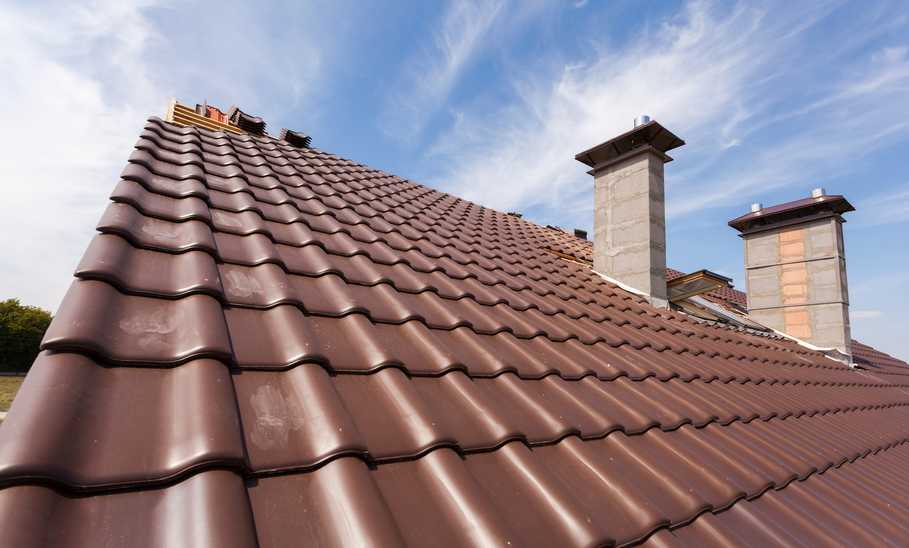How Much Does Roof Replacement Cost

Our evaluations and opinions are not influenced by our advertising relationships, but we may earn a commission from our partners’ links. This content is created by TIME Stamped, under TIME’s direction and produced in accordance with TIME’s editorial guidelines and overseen by TIME’s editorial staff. Learn more about it.
Replacing a roof is one of the most expensive projects for homeowners. HomeAdvisor says the average cost is between $5,853 and $13,044. However, the exact cost can vary widely based on the size of your home, the roofing material, and where you live.
If your roof shows signs of needing a replacement, it’s important not to ignore them, as this can negatively impact your home’s value in the long run. Here are some ideas to help make costs manageable, from partial roof replacements to the best credit options.
A number of factors can determine the cost of replacing a roof, which is why the estimated replacement price has a wide range. Your home’s design may also influence the final outlay. Here are the main factors that can influence how much you may need to spend:
Material costs are naturally a major component of the roof replacements, and prices can differ considerably. Material prices are usually quoted per “square,” which refers to a 10-foot by 10-foot area.
Shingles are the most common roofing material, lasting between 25 and 50 years. But while affordable, “they do show their age as they fade over time and can get blown away in strong winds if not installed correctly,” Michael Friedlander, general manager at Dr. Roof Atlanta said.
Generally, materials like asphalt are cheaper than slate or tile. And many homeowners associations, subdivisions or communities require roof uniformity to keep up property values, Friedlander said. Here is a closer look at how the costs might look.
| Type | Material cost per square | Lifespan (years) |
|---|---|---|
Architectural shingles | $100 – $250 | 20 – 30 |
Asphalt | $80 – $130 | 15 – 20 |
Metal | $100 – $800 | 30 – 80 |
Tile | $300 – $2,500 | 30 – 100 |
Slate | $600 – $1,600 | 50 – 200 |
Wood shakes | $300 – $700 | 25 – 30 |
Source: Homeguide. Material cost per square does not include cost of installation.
These are only estimates, and they don’t include labor costs. So for example, if you have a 2,000-square-foot house and want to use asphalt shingles with a material cost of $150 per square, your entire home would cost $3,000, plus labor.
If damage to your roof is limited to one side or one section, you might be able to get away with a partial replacement. This can save you money because it requires less labor and materials.
But if the roof has structural issues that need addressing, a full replacement could be the cheaper option in the long term. Ignoring these issues could lead to damage that costs more to fix.
Given that labor can be more than half the cost of a roof replacement, you might think doing it yourself would be cheaper. Strictly speaking, that may be true, but you must understand what is involved when you decide to go it alone.
Firstly, let’s consider the costs:
There are other potential hidden costs to keep in mind. For instance, if you aren’t experienced in roof replacements, you could end up with leaks, structural damage and voiding of material warranties. These issues could make replacing your own roof more expensive in the long run, not less.
Roofing can also be hazardous, especially without the necessary safety equipment and precautions. “Roofing is extremely dangerous and has a high rate of injuries and death compared to other types of construction labor,” Friedlander says. While replacing your roof to save money can be tempting, Friedlander says it’s not worth risking your life.
Here’s what else you should keep in mind for this major project.
There is a layer underneath shingles called the underlayment. The underlayment can serve many purposes, such as providing moisture protection, fire resistance, and insulation while your roof is being installed.
If your roof is old, it can leak, damaging the underlayment and decking (the wooden layer beneath the shingles). Repairing the underlayment can be expensive, and an early inspection can help minimize any costs you might incur.
Warranties are crucial to protecting your investment from the elements, such as rain, hail, wind, snow, or tornadoes. The material and contractor you choose will greatly influence the ultimate amount of warranty coverage, with more comprehensive warranties increasing the upfront cost. Explore these issues carefully before you decide on a final plan.
A roof replacement is such a complex job that it’s likely at least a few unexpected issues will arise—such as hidden water damage and structural issues.
“Roofs often have slow leaks that homeowners are unaware of. These unnoticed and sometimes undetectable leaks often cause the wood surface that the roof is attached to rot and become unusable,” Friedlander explains. He says these issues often remain hidden during the inspection and estimate process, only to be revealed when the old roof and underlayment are removed.
If the wood underneath is rotten, warped, or delaminated, it must be replaced before attaching new shingles. “The cost of replacing this wood is often an unexpected cost and can range from $50 to several thousand dollars in some cases,” Friedlander says. It’s a good idea to have extra cash available to address any issues that arise.
Any of the following signs could indicate your roof is nearing the end of its lifespan. The more you see, the clearer the message should be.
These are just a few indications that you may need a new roof. If it has been many years since your roof was replaced and you have a basic asphalt shingle roof, you never know what issues could be hiding. In these cases, it’s best to have an inspection and find out whether you may be in need of a replacement.
Roof replacement can be very expensive, but there are many ways you might be able to pay for it. Here are some of the most common routes.
If you have enough cash or savings set aside, you might be able to pay for your roof replacement upfront. This is the simplest option and doesn’t require paying any interest.
However, not everyone will have enough cash available. Even if they do, it could mean depleting their savings to an uncomfortable point.
There are several home equity financing options available, including home equity loans and a home equity line of credit (HELOC). In either case, you use your existing home equity as collateral, which could result in a lower interest rate. However, it also means your home could be repossessed if you are unable to pay.
Personal loans generally have a simple approval process, and some companies may provide up to $100,000 loans. While this is enough to cover almost any project, these loans can have higher interest rates than secured options. However, another upside is they often don’t require collateral.
Homeowner’s insurance may cover some or even all of the cost to repair or replace your roof. However, this generally means the replacement is necessary due to things like damage from rain, wind, hail, snow, etc. While this won’t apply in all situations, it’s well worth looking into if your roof was damaged in a storm.
A new roof can increase your home’s value, especially if the old roof has significant issues. It can also increase your home’s curb appeal and attract more buyers willing to pay more. Keep in mind that higher-quality materials, while more expensive, can increase value and the home’s price.
How long roofs last can vary significantly depending on factors like the materials used and where you live. Asphalt shingles, which are among the most common materials, usually last 15 to 30 years. More durable materials, such as slate shingles, can last anywhere from 50 to 200 years.
The best time of year to replace a roof may vary by location, but fall and spring are generally popular. The weather tends to be milder, and this time of year can also be less busy than summer. However, if your roof has serious issues, it’s likely better to address them right away than wait.
The information presented here is created by TIME Stamped and overseen by TIME editorial staff. To learn more, see our About Us page.



